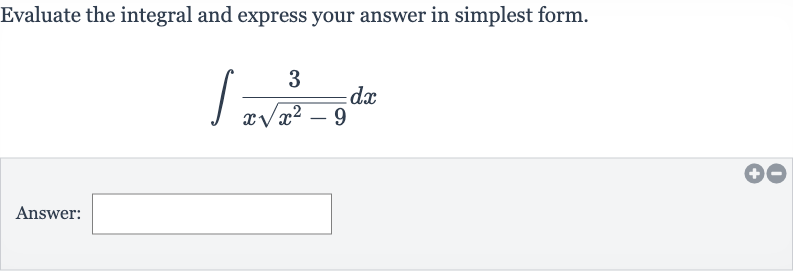Full solution
Q. Evaluate the integral and express your answer in simplest form.Answer:
- Recognize standard inverse trigonometric form: Recognize the integral as a standard inverse trigonometric form.The integral resembles the form of the derivative of the inverse hyperbolic function, specifically the inverse hyperbolic secant. We can rewrite the integral in a form that matches the derivative of or .
- Use substitution to simplify: Use substitution to simplify the integral. Let , which implies . When , we have . Now substitute these into the integral.
- Simplify the expression: Simplify the expression.The terms cancel out, leaving us with:
- Recognize natural logarithm function: Recognize the integral as the natural logarithm function.The integral of is the natural logarithm of the absolute value of ., where is the constant of integration.
- Back-substitute to original variable: Back-substitute to return to the original variable . We need to express in terms of . From the substitution , we have . Since , we can solve for .
- Simplify expression inside logarithm: Simplify the expression inside the logarithm.We can simplify the square root and the square inside the logarithm.
- Simplify logarithm expression: Simplify the logarithm expression.Since , we can separate the terms inside the logarithm.
- Combine constants into single constant: Simplify further using properties of logarithms.The natural logarithm of a square root is one-half the natural logarithm of the argument, and is .
- Combine constants into single constant: Simplify further using properties of logarithms.The natural logarithm of a square root is one-half the natural logarithm of the argument, and is .Combine the constants into a single constant of integration.Since is an arbitrary constant, we can combine the constants from the logarithm properties into a single constant.

